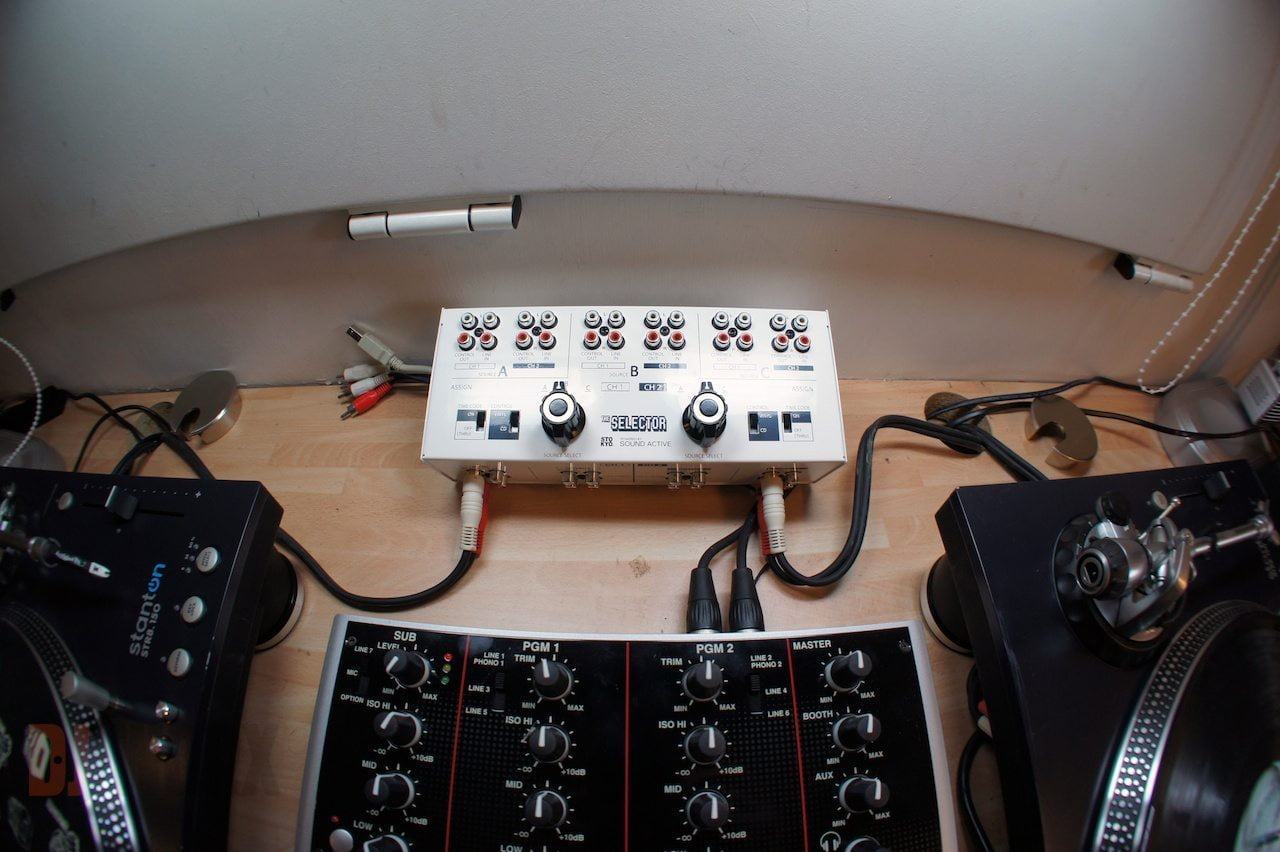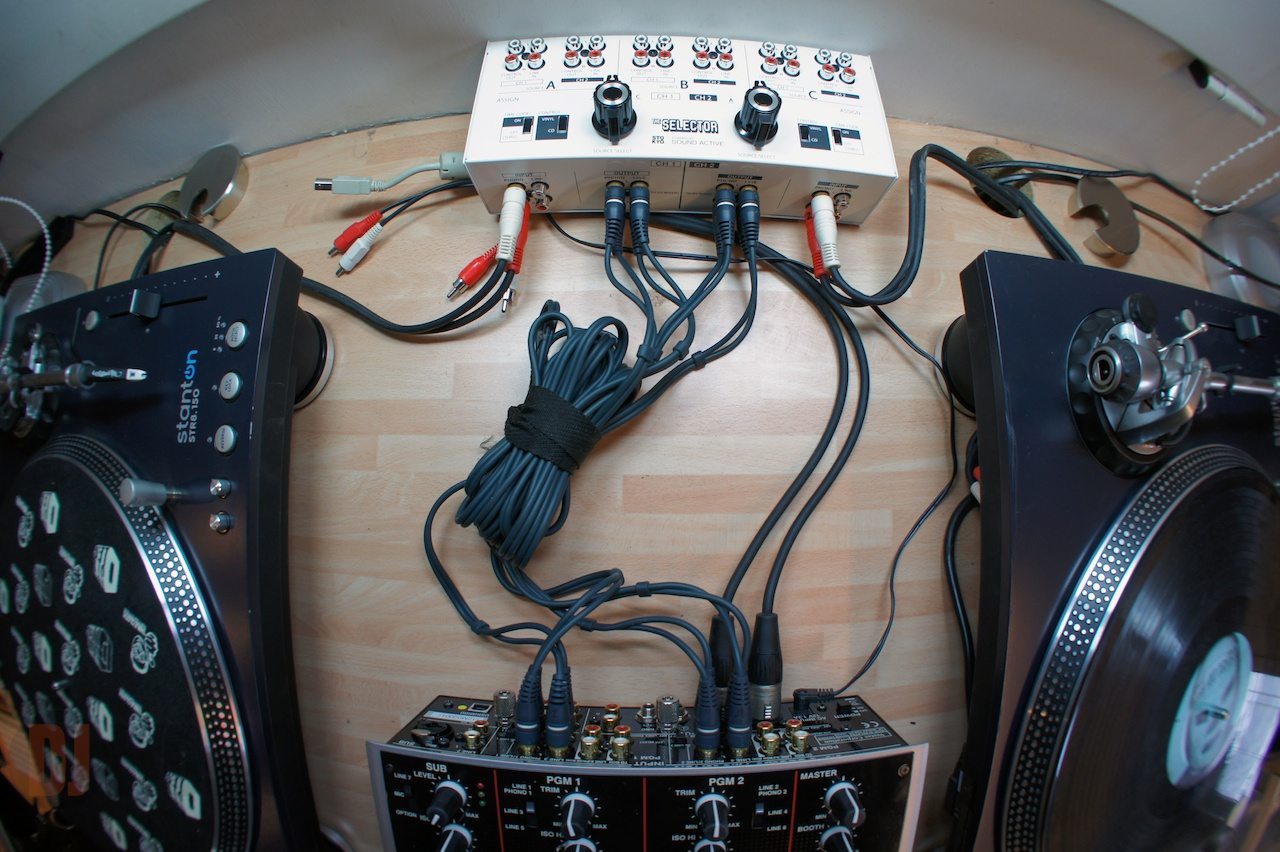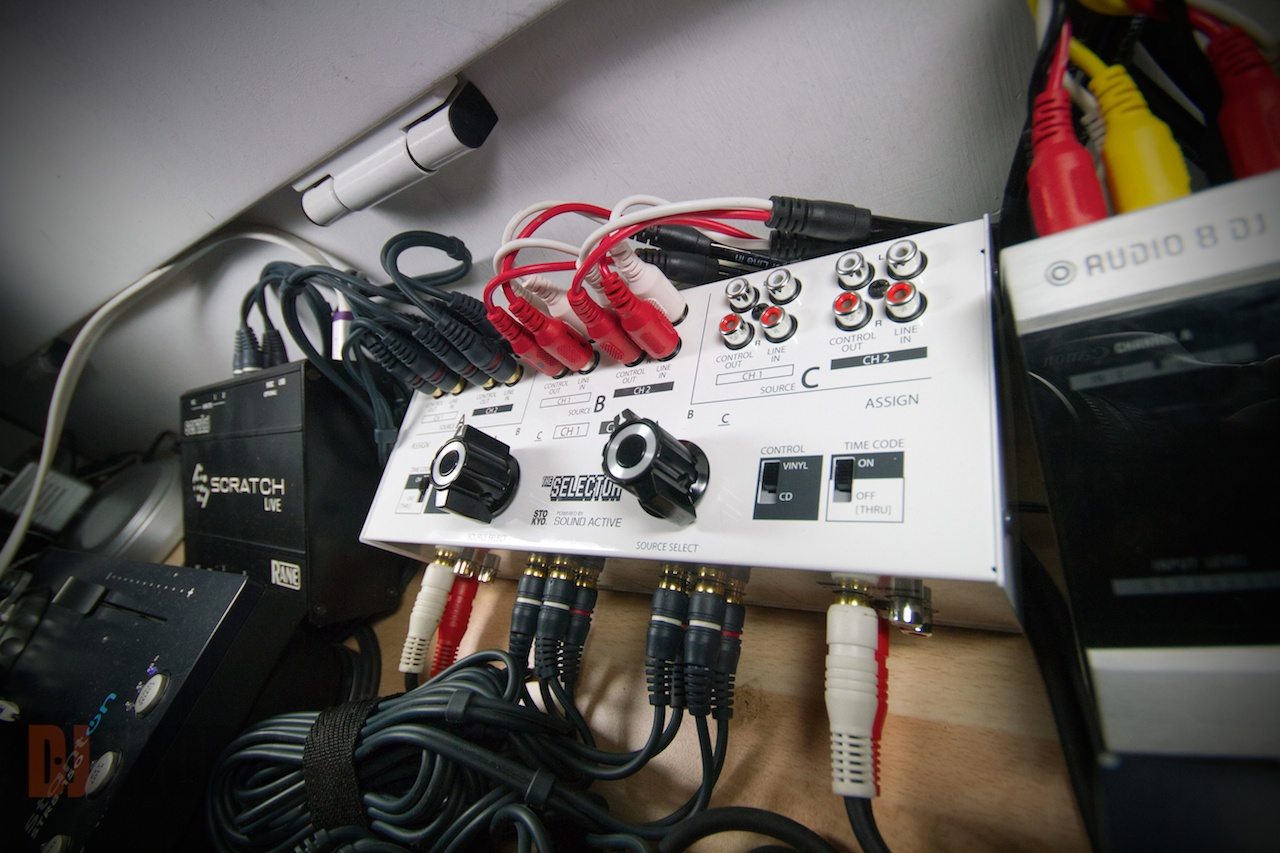Link: Stokyo • Price at launch: $350 (US only at time of review)
Table of Contents
Introduction

As cool as DVS systems are, they bring a unique set of issues that didn’t exist before. Here’s the situation – one set of decks, 2 digital DJs – how do they switch over? With great difficulty to be honest. There’s a period of uncertainty where real vinyl and cables change hands – not ideal at all. If you both use Traktor, then the supplied multicore cables makes life a little easier too. But it’s largely down to switch boxes to ease the pain.
You might remember the Magma Switchbox – this lets you hook up 2 different audio interfaces to a single mixer and switch between them easily. This means instant switchover, as well as playing through as well. It’s ideal in such a scenario. There are others – the Rodec Patch Live and Allen & Heath Xone:PB. But there’s a new contender from Stokyo – the aptly named Selector. This one is a wee bit different in that it can handle 3 sources instead of the normal 2 – so that’s 3 audio interfaces sharing 1 mixer.
How it works

Normally, you’d plug your decks into your audio interface of choice, which in turn is connected via USB to your laptop, which processes the audio and then funnels it back out again to the interface and then to your mixer. It’s usually line and phono going to your mixer so that you can switch between the DVS and phono thru (hate that spelling but it’s standard now) output.
So you can see where the problems arise when trying to do a changeover. Given the normal amount of unlabelled RCAs floating around between a pair of DJs, it can all get quite seriously messy.
The Selector sits between the decks and the interfaces. You plug the turntables in the PHONO inputs, or CD decks into LINE. If you have both plugged in, you can isolate the signals with the vinyl/CD control switch. You can also bypass the whole audio loop completely and play regular vinyl or CD by engaging the Time Code on/off switch.
And then it’s a matter of making sure that you wire up your interface correctly and connect it to one of the channels as you would the mixer. And assuming that’s all done properly, DJs should be able to walk up, plug in and switch over without an issue.
So let’s try it.
1. Decks to Selector – Check

2. Selector to mixer – Check

3. SL-1 to Selector source A and Audio8 DJ to source B – Check

1 and 2 are easy, but 3 less so. People used to doing this will know what a pain this part can be, and normally have their cables marked up or colour coded. Due to different terminologies, this will be a hit and miss affair, but at least you have the length of a track to get it right. If you do it one at a time, that’s 2 channels/4 RCAs to plug in and check – not that tricky really.
But despite this complex mess of cabling, there’s not much to test on the Selector. The RCAs are firm, the switches are low to prevent accidental knocking and the source selector knobs are large and solid – everything works well. It’s also important to note that this is a passive device, so there’s no power and no noise introduced into the audio chain.
Despite going against the accepted DJ colour scheme grain and giving it a white paint job, this actually works better in a dark environment, which is most likely where it’ll be employed. Rather than DJs lugging this around, I see this as an installation item. Given the near non-stop adoption of DVS systems, this should be a standard fixture in clubs, making switching over a practical reality rather than an annoying pain in the arse.
The other thing I like about this is the top facing RCAs. The more permanently fixed deck and mixer connections sit at the front, and probably stay put in most situations. But unlike other similar solutions, hooking up the audio interface’s RCAs can be done in situ without needing to move the Selector around to fit them. Top marks.
A final note about usage – it probably goes without saying, but I will anyway. The Selector is little more than a source switcher. So this can also be for all manner of audio equipment, and the excellent manual (once you have an English version) goes to great lengths to show various setups including Traktor and SSL interfaces. Indeed, I hooked up a Vestax VCI-300 to the third unused source and was able to happily switch in and out between all channels without a hitch.
Stokyo Selector DVS Switcher Review Summary

SImply put, the Selector is a box full of RCA ports and a handful of knobs and switches. Bar the kerfuffle of correctly wiring up your interface to the Selector (not the Sector’s fault of course), it works exactly as prescribed. You’re more likely to be tripped up by your own attempts at cabling than the Selector itself – I certainly was. Given practice, it becomes second nature anyway.
The question is if you as an individual really need one at all. I find it incredibly handy with a single pair of decks for switching between Traktor and Scratch Live, and so will any DJs who regularly have to use both. Clubs will find it very handy in the booth if their DJs use a variety of systems and equipment. So the single user will install it and forget it, but booths should really install one as standard.
If however, your need is to switch between just 2 sources, then any of the available solutions will do that. The success of the Selector is eae of use, no installation and being able to handle 3 sources. Multiple DJs can come along and setup before the show, rather than having to switch between sets. It does come at a price though, as the Selector is a tad pricier than other solutions.
Whatever your needs, The Selector does the job of switching between DVS sources into a single mixer perfectly.
Ratings
Build Quality
It’s a tank, from the solid metal case to the controls. It’ll take a lot of punishment.
Sound Quality
Irrelevent. As a passive device, it adds nothing to or takes anything away from the audio chain.
Features & Implementation
It’s a compact unit with access to everything without having to reach beind or move the box. And it can handle one more source than the competition.
Value For Money
Really hard to put a price on ease and convenience when switching over DJs. On a like for like basis, it’s pricey, but you do get 3 sources.
The Bottom Line
The Stokyo Selector is a compact and flexible solution for mutiple DJs in a fluid scenario. No installation required, and 3 DJs can get prepared in advance. Stokyo Selector DVS Switcher Review summary? – Hard to beat.
Gallery
I really don’t think that a utility item such as this really needs a glossy gallery, but here are high res versions of the shots in the review.







